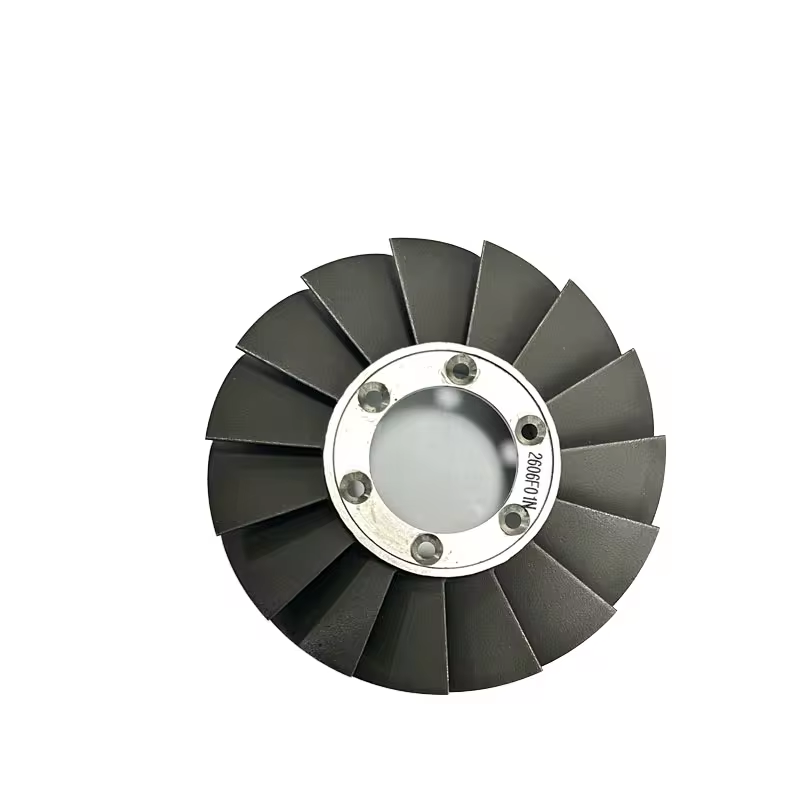
by precisely controlling the forging process and using high-precision dies, precision forgings have high dimensional accuracy and repeatability.
Precision forgings usually have good surface quality, reducing the need for later processing.
Since the part size is close to the final product, the precision forging process reduces material waste and improves material utilization.
Precision forgings are usually superior to castings or machined parts of the same material in mechanical properties due to the complete metal flow lines, especially in terms of fatigue resistance and impact resistance.
Aerospace: used to manufacture key components such as aircraft engine blades and turbine disks.
Automobile manufacturing: used to produce important parts such as engine crankshafts, connecting rods, gears, etc.
Mechanical engineering: used to manufacture high-strength bolts, bearings and other mechanical parts.
Energy industry: used in the production of nuclear power plant equipment, wind turbine components, etc.
Preparation work: Select appropriate metal materials and make molds according to part design drawings.
Heating: Heating the metal blank to the appropriate temperature to facilitate deformation.
Forging: Forging a heated metal blank into the desired shape using a hydraulic press, forging hammer, or press.
Cooling and heat treatment: Forgings are cooled under controlled conditions and heat treated as needed to optimize their mechanical properties.
Subsequent processing: including deburring, cleaning, finishing and other steps to ensure that the forgings meet the design requirements.
Factors to consider in precision forging of high-temperature alloys:
Forging temperature: It is critical to select the appropriate forging temperature to maintain the plasticity of the high-temperature alloy during the forging process while avoiding overheating or burning the material. The temperature also needs to take into account the recrystallization temperature of the alloy to prevent excessive grain growth.
Heating rate and cooling rate: These two parameters must be carefully controlled to avoid uneven microstructure or stress inside the forging part while ensuring the final performance.
Die material and design: The die used for precision forging must be able to withstand the temperature and pressure during the forging process of the high-temperature alloy, and the die material and design should ensure precise dimensions and details.
Deformation rate: The deformation rate during the forging process affects the material flow and the evolution of the crystal structure, which in turn affects the mechanical properties and dimensional uniformity of the component.
Atmosphere control: Some high-temperature alloys are extremely easy to oxidize or even absorb impurities such as nitrogen and hydrogen during the forging process, so they may need to be forged in a specific atmosphere (such as inert gas protection) or vacuum to reduce contamination.
Post-treatment: Precision forgings of high-temperature alloys usually require subsequent heat treatment to optimize their performance.
Material properties: Specific properties of the material, such as yield strength, hardness, toughness and corrosion resistance, need to be comprehensively evaluated before forging to ensure that the designed forging process can meet the final use requirements.
Forming force and equipment capacity: High-temperature alloys tend to have higher hardness and strength, and greater forming force is required during forging. Therefore, it is necessary to select appropriate forging equipment and optimize the application of forging force.
Precision forging technology plays an important role in the manufacturing of turbine components, especially for applications that require high performance, high precision and excellent material properties, such as aerospace, military, advanced automotive and energy industries. The following are some common turbine parts produced by precision forging:


Probably one of the most commonly manufactured parts by precision forging, because turbine blades need to withstand extreme temperature and pressure conditions.


As the supporting structure of turbine discs, they require extremely high precision and strength to ensure the stable and safe operation of the entire turbine.


Used to guide the high-temperature gas at the outlet of the combustion chamber into the turbine impeller and accurately control the airflow angle.


These key components of turbines need to be precisely matched to ensure efficient energy conversion.


Turbine segment is a key part of turbine components, which is usually used in high temperature and high pressure environments such as aircraft engines and gas turbines. They are usually made of high-temperature alloy materials with excellent high-temperature strength and oxidation resistance
High strength and durability
Excellent fatigue performance
Complex shape manufacturing capability
Material diversity